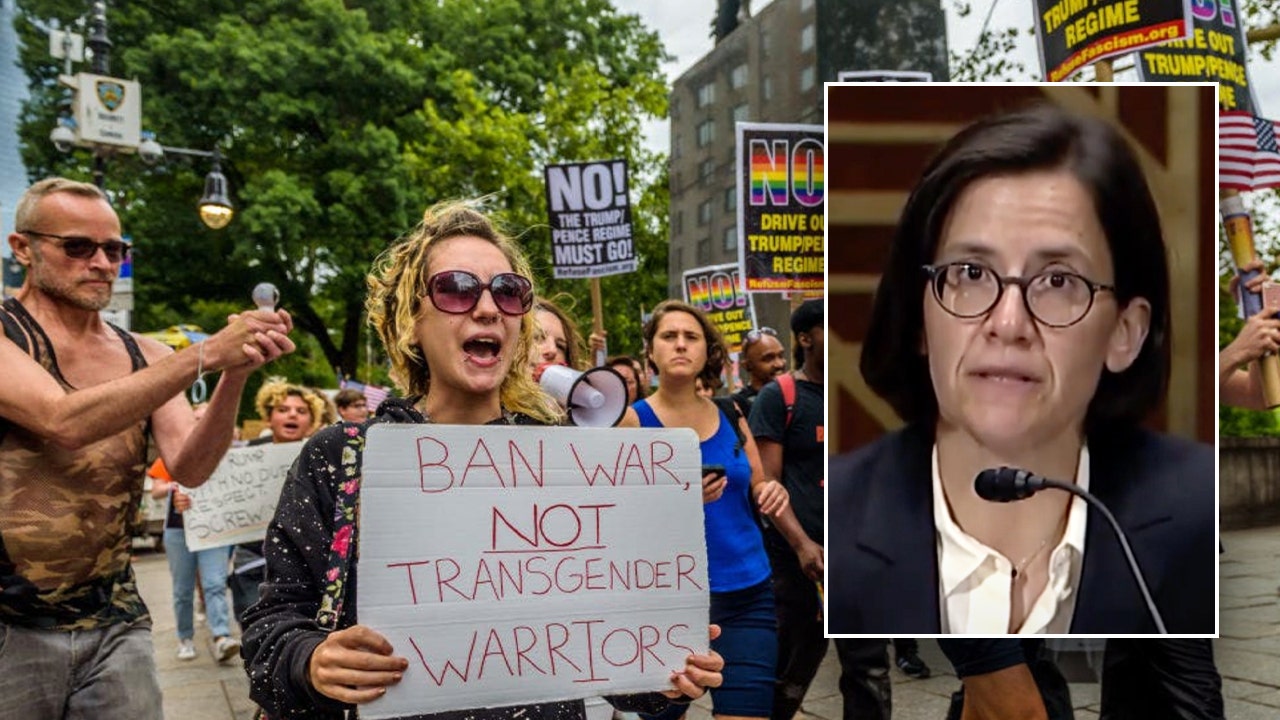Crab cakes made from fonio, an ancient West African grain, or ratatouille, made with “imperfect” products to reduce food waste, are just a few of the 70+ recipes included in the recently launched version Cookbook in Support of the United Nations: For People and Planet.
The book – produced in cooperation with the UN Food and Agriculture Organization (FAO) in consultation with other UN bodies such as UNESCOthe UN Environment Program (UNEP), UN climate change (UNFCCC) and the UN Department of Global Communications – is the brainchild of Kitchen Connection, an organization that has been connecting culinary arts, sustainability and education and driving discussions about the need to transform food systems for a decade.
“Because we understand that the consumption of cookbooks is increasing and that people are turning to them as a source of education and inspiration, the idea for one has always been on our table,” explains Kitchen Connection founder and New York University professor Earlene Cruz, to UN News.
Chef Manal Al Alem, World Food Program Goodwill Ambassador, and Earlene Cruz, Founder of Kitchen Connection, hold the cookbook in support of the United Nations.
But how is this cookbook different?
For human and planet is divided into chapters covering food systems, biodiversity, sustainable consumption and production, climate and food waste, and offers recipes, yes, but also insights into the carbon footprint of each dish.
“We found that people in the world’s highest emitting countries emit around 3 kilograms of CO2 emissions per meal through our food choices. The recipes in this book have 58.6 percent less carbon compared to the average meal from high-emission regions. This book is dedicated to the planet,” says Ms. Cruz.
The cookbook also highlights and follows the guidelines of the UN World Health Organization (WHO) macronutrient guidelines, making the recipes not only healthy for the planet but also for us.
But most importantly, it highlights how important our food choices are and how they can impact our immediate environment, no matter where we cook.

Lionfish and carambola cashews, one of the recipes featured in the cookbook in support of the United Nations.
The climate cost of our food choices
Describing a quiche recipe by Lisa Johnson, a cook for NASA scientists in Antarctica, Ms. Cruz says, “This recipe contains [chicken] eggs, and in Antarctica, [chickens cannot] interact with penguins in some way, so Chef Lisa had to prepare that part of the recipe in an entirely separate facility. This shows the challenges of cooking in remote areas.”
“The point is, whether we’re in cities, in suburban or rural areas, or in a place as remote as Antarctica, considering our dietary habits and how they affect our immediate environment is paramount,” she adds.
The book contains 75 recipes along with instructions for preparation, but also reflections and stories, including from indigenous communities and farmers, the root source of the global food production chain.
The book’s contributors were brought together by Kitchen Connection, which offers an online platform for cooking classes and education.
“Activist, restaurateur and entrepreneur Kimbal Musk also lent his voice and introduced this book, so from the indigenous Sioux community to Antarctica, [it] reflects the realities of our diverse food system and inherent culinary cultures. What was most gratifying was that over 200 people came together and signed up to support this cause,” emphasizes Ms. Cruz.
For example, Ska Mirriam Moteane, a Lesotho chef, shares a recipe for a dandelion salad tower that emits 87.58 percent less carbon than the average meal in high-carbon countries like the United States and China.
The dish encourages biodiversity by including dandelions, a nutritious green that grows in the wild and in the local fields around her own home.
Sustainability is even built into the book itself: the pages are made from responsibly sourced wood fiber.
“There will always be an environmental cost to producing something like this, but we did our best from start to finish to make the book itself, as well as its content, sustainable. This book dedicated to the planet is in print [Forest Stewardship Council]-certified sustainable paper, as we know that is how traditionally hardcover cookbooks are consumed,” explains Ms. Cruz.

World Food Program Goodwill Ambassador Chef Manal Al Alem during the launch of the cookbook in support of the United Nations at COP27 in Egypt.
Why all of this matters
Corresponding FAOFood systems contribute to and are affected by extreme weather events related to climate change, land degradation and biodiversity loss.
Addressing these challenges requires a systems-based approach that addresses the breadth and complexity comprehensively and sustainably. Initiatives like this cookbook aim to support the answer.
“We can start with questions that help us understand the journey of our food: Where is it grown? Who grew it? How did it get on my plate? As conscious and empowered individuals, we can unite to insist on more sustainable practices from farms and food companies, and demand bold climate policies from our governments,” urges the Kitchen Connection founder.
Ms Cruz, who is also a member of the UN Department for Global Communications youth civil society representative, underscores the need to eat more local, organic ingredients and reduce kitchen waste.
“But it also has to taste good. That’s why we need to reach out to activists, chefs, farmers and indigenous peoples who really know how to grow and create beautiful recipes to help us,” she adds.
Celebrity chef Jose Andres, known for his culinary and humanitarian work, is another contributor and contributor to the cookbook.
“By educating ourselves and each other on how to feed ourselves better for human and planetary health, we can limit the number of people going hungry by preventing and stopping natural disasters before they happen. The cookbook in support of the United Nations for people and planet is a wonderful example of this,” he said in a video message for the book’s launch event COP27the recent UN Climate Change Conference in Sharm el-Sheikh, Egypt.
For Earlene Cruz, nature holds the answers because “what’s good for people is good for the planet”.
“For example, Indigenous chef Rosalia Chay Chuc’s black bean recipe is the lowest-emissions recipe in the book. Beans, when consumed with other grains, provide us with complete proteins that are wonderful for human and planetary health. They are also soft in the soil and don’t need a lot of water to grow. Nature itself provides the best “recipe” and formula for the health of people and the planet,” she explains.
Other contributors include Food Systems expert Dani Nierenberg, who shares a delicious recipe called Make Do Ratatouille that reduces food waste by using “imperfect ingredients” to create a “perfect dish” in the most delicious way.
“And chef Pierre Thiam contributed a fonio recipe that uses a ‘rediscovered’ grain and has fully reinvigorated the economy of Senegalese farmers in the region where fonio is grown, historically a place where people are searching migrated to Europe for a better life, not realizing the wealth of the country they were fleeing,” Ms Cruz told UN News.

Bulgur and Pomegranate, a recipe by Chef Manal Al Alem, was launched during the cookbook launch at COP27 in Sharm El-Sheikh, Egypt.
Into the future
The cookbook, which is already available at major bookstores and online retailers and will soon be available for purchase at the Visitor Center at the UN Headquarters in New York, is also slated to come to life in 2023 as a documentary series that will explore indigenous communities threatened by climate change remote areas.
“There is no one-size-fits-all solution, but if we adapt it to the local context, we can really have a global impact through our food choices. We vote with both our ballots and our taste buds,” says Ms. Cruz.
For her, the book marks the beginning rather than the end of a wonderful collaboration and contribution that she hopes will have a positive impact on people around the world.
“We want the book to get into the hands of the average person – that’s why we’ve teamed up with a traditional publisher – to get this message out of the echo chambers and into the hearts and minds of those who may not (yet) know it or themselves.” worry about. about the strong symbiotic relationship between our food systems and the planet. We don’t just want to sell books; we want to make a difference and spread the word,” says Ms. Cruz.





